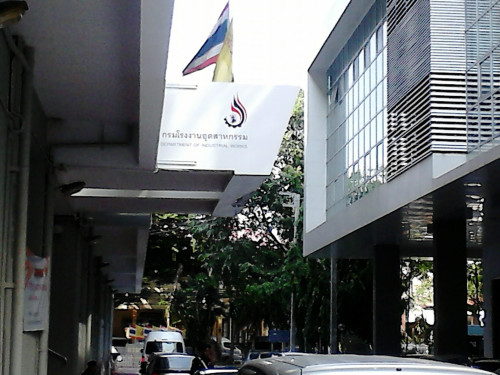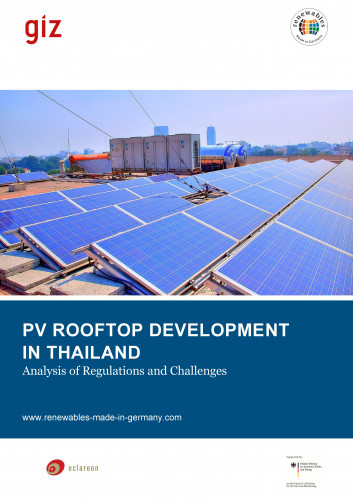The time has come to get involved more in renovation processes for Hazardous Substance Act,
Thailand.
Introduction
The Kingdom of Thailand (Thailand) has been in process of chemical management renovation, based on the 4th National Strategic Chemical Management Plan between 2012 to 2021. In particular, Hazardous Substance Act 1992, which is the fundamentals of industrial chemicals regulation has lots of critical problems to be addressed for party (manufacturer, importers) and various stakeholders. The problems such as building of industrial chemicals inventory, development of new chemicals management system, obligation of chemical risk assessment, conducted by parties and GHS implementation for mixture.

It seems that the renovation processes by government sector are not necessarily conducted in open minded compared with that of another countries which had installed like China, Taiwan and Korea. Some Parties have tough time in coping with this situation due to extremely limited documentation by government sector.
Existing chemicals inventory
List 5.6
The Department of Industrial Works (DIW) issued a notification, which designated new criteria on hazardous substance as a list 5.6 on February 19, 2015. The list 5.6 requested that parties should submit notification documents via DIW’s web site when chemicals meeting the definition of thoroughly unclear ten hazardous characteristics below and handling more than 1,000 kg / year of these substances within 60 days.
10 characteristics, defined on the list 5.6:
1. Explosive
2. Flammable substance
3. Oxidizing agent, or Peroxide
4. Toxic substance
5. Mutagen
6. Corrosive
7. Irritant
8. Carcinogen
9. Toxic to reproductive organ
10. Environmentally hazardous substance
Please visit our web site to download a material on the list 5.6 at;
http://hstecheng.com/info/1172622
DIW provides some privileges with parties who embrace to submit the notification document, including exemption of classification of product, based on GHS. Furthermore, parties who want to avoid conducting chemicals risk management for new chemicals were obliged to input necessary information on the web site which does not establish secure environment in https or SSL between web server and client computer.
It was only parties who could input information on the web site, using I.D. and password, issued by DIW. It should be reminded you that the password could not change by parties and the ’parties’ meant registered organizations in the Department of Business Development (DBD), the Ministry of Commerce, Thailand.
The web site system did not allow to ignore to input some inevitable portions. The party had to mark one of the 10 characteristics, based on its own decision or unclear advice by some consultancies.
Sympathy might be generated when we heard from DIW that parties had distrust with the inconsistency between SDS / GHS classification and the notification document. DIW recognized that some documents were fake and did not meet the criteria on GHS classification or related documents, issued by DIW. It might be natural for parties that they selected this way due to the lack of enough knowledge in criteria on list 5.6 and the looming due date, December 31, 2016.
Preliminary of Thailand Existing Chemicals Inventory
DIW opened a Preliminary of Thailand Existing Chemicals Inventory (PTECI)data base on the last week in August through a notification. On the other hand, the issue date of the notification was June 30th, 2016. Then I’m afraid that most of whom could not know the PTECI in between around two months.
Even trying to log in the PTECI, we could not access it for around two months from August. Some parties said that they could long in from the DIW building. I think that some problems in the DIW server and DIW server could not accept when excess of access would be made. Two month had passed since late August and problems were solved. On the other hand, there still had some problems with the IT system. For example, we saw difference between the results when inputting the same search word. There were some problems with IT system for improvement.
PTECI constitutes two layers of data base. The first one contains CAS Number, substance name and cut off value or condition, applied to hazardous substance for some substances. The second one constitutes manufactures name, trade name. PTECI in the second layer will generate result when every search word coincide the original one. I’ve never seen any kind of results when trying to search in using company names and trade names correctly except for cases that I knew exactly.
Confidential Busuness Information
Parties including representatives for parties who claim to secure confidential business information (CBI) have a CBI route which enables them to submit CBI directly to the specific e-mail address in DIW. Only several administrative staffs in DIW are able to open the e-mail.

Reference: Cover letter for CBI request, English version. The original one was prepared in Thai language.
On the other hand, only representatives do not allow to handle throughout CBI processes. Parties or forwarders of the product shall input basic documents which do not include CBI on the DIW’s web site, using their I.D(s). and pass words, issued by DIW. The password cannot change by parties due to some unknown reasons in DIW. Parties need to visit DIW to get serial number on each paper which includes basic information. Now, only representatives are able to compile entire documents for CBI procedure and scan all paper below the file size of 5 Mb. Eventually, only the representative will submit all scanned data to DIW. An administrative staff in DIW said in late March that she was now coping with CBI documents which had received in the last August.
New chemicals management
DIW held a brain storming meeting on August 26 in Bangkok for people who involved mainly in industrial sectors to share information with new chemicals management system. The core of the presentation was delivered by an independent consultant who was a member for industrial club in Thailand. The system included procedures on chemical risk assessment which must be conducted by parties, introduction on SVHC similar with the definition of European REACH regulation. The independent consultant also overviewed the concept of risk assessment methods through material, prepared by NITE, National Institute of Technology and Evaluation, Japan.
According to a dialogue with officers in DIW, DIW does not hold any meetings, conferences, focused too much on the new chemicals management system after the brain storming meeting. Just note that DIW announced on its web site that the definition on the new substances has not yet determined on November 9th, 2016. Decision will be made through open discussion in meeting(s) with various stakeholders in the (near) future.
Challenge and outlook on renovation processes
Lots of contributions and involvements to the renovation on the chemicals management system in Thai made remarkable progress. Japan also has continued to support Thai government in this field since several decades ago through various schemes, typically Ministry of Economy, Trade and Industry (METI) Japan, Japan International Cooperation Agency (JICA) and Japan Chemical Industry Association (JCIA) etc. In recent years starting from 2012, METI had three years of bilateral agreement on chemical risk management with DIW. The agreement entered the second phase and continues until December 2018.
Furthermore, JICA and three counterparts (DIW, PCD and IEAT) had conducted five years of PRTR Pilot Project in Rayong Province in Thailand between March 2012 and February 2015 for the development of possible regulation in all over the Thailand.
PRTR: Pollutant Release and Transfer Registers
https://www.jica.go.jp/project/english/thailand/013/
PCD: Pollution Control Department, the Ministry of Natural Resources and Environment
IEAT: Industrial Estate Authority of Thailand
On the other hand, the renovation processes remain unshared critical problems between stakeholders. Furthermore, few documentation was made public by DIW and stakeholders do not know master plan on the renovation.
We saw a position paper on solar power system in March 2014 which analyzed regulatory procedures in DIW and expansion of installation for solar roof top panel in Thailand, prepared by Deutsche Gesellschaft für Internationale Zusammenarbeit (giz) GmbH in support of Federal Ministry for Economic Affairs and Energy, Germany. The position paper clarified some unclear regulations and procedures in Factory Act 1992 which had impeded the spread of solar roof top at house, particularly in the urban area. Increase in the discussion with stakeholders including other government sectors in Thailand enabled to wrench some barriers thanks to the paper.

You are able to download the paper from the web site at;:
http://www.thai-german-cooperation.info/download/20140408_pdp_th_report_pv_regulations.pdf
[Prepared by Hashimoto, President of HS-TECH ENGINEERING Co., Ltd.]
